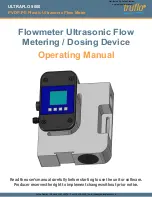
6
TEST METHODS SPECIFICATIONS
INTRODUCTION
Ammonia nitrogen is present in various concentrations in many surface and
ground water supplies. Any sudden change in the concentration of ammonia
nitrogen in a water supply is cause for suspicion. A product of microbiological
activity, ammonia nitrogen is sometimes accepted as chemical evidence of
pollution when encountered in natural waters.
Ammonia is rapidly oxidized in natural water systems by special bacterial
groups that produce nitrite and nitrate. This oxidation requires that dissolved
oxygen be available in the water. Ammonia is an additional source of nitrogen
as a nutrient which may contribute to the expanded growth of undesirable
algae and other forms of plant growth that overload the natural system and
cause pollution.
APPLICATION
Drinking , surface, and saline waters; domestic and industrial wastes.
RANGE
0 to 5.0 ppm Ammonia Nitrogen
METHOD
Ammonia forms a colored complex with Nessler’s Reagent in proportion to the
amount of ammonia present in the sample. Rochelle salt is added to prevent
precipitation of calcium or magnesium in undistilled samples.
HANDLING & PRESERVATION
Preservation is accomplished by the addition of 2 mL of concentrated H
2
SO
4
at 4°C.
INTERFERENCES
Sample turbidity and color may interfere. Turbidity may be removed by a
fi ltration procedure. Color interference may be eliminated by adjusting the
instrument to 100%T with a sample blank.






































